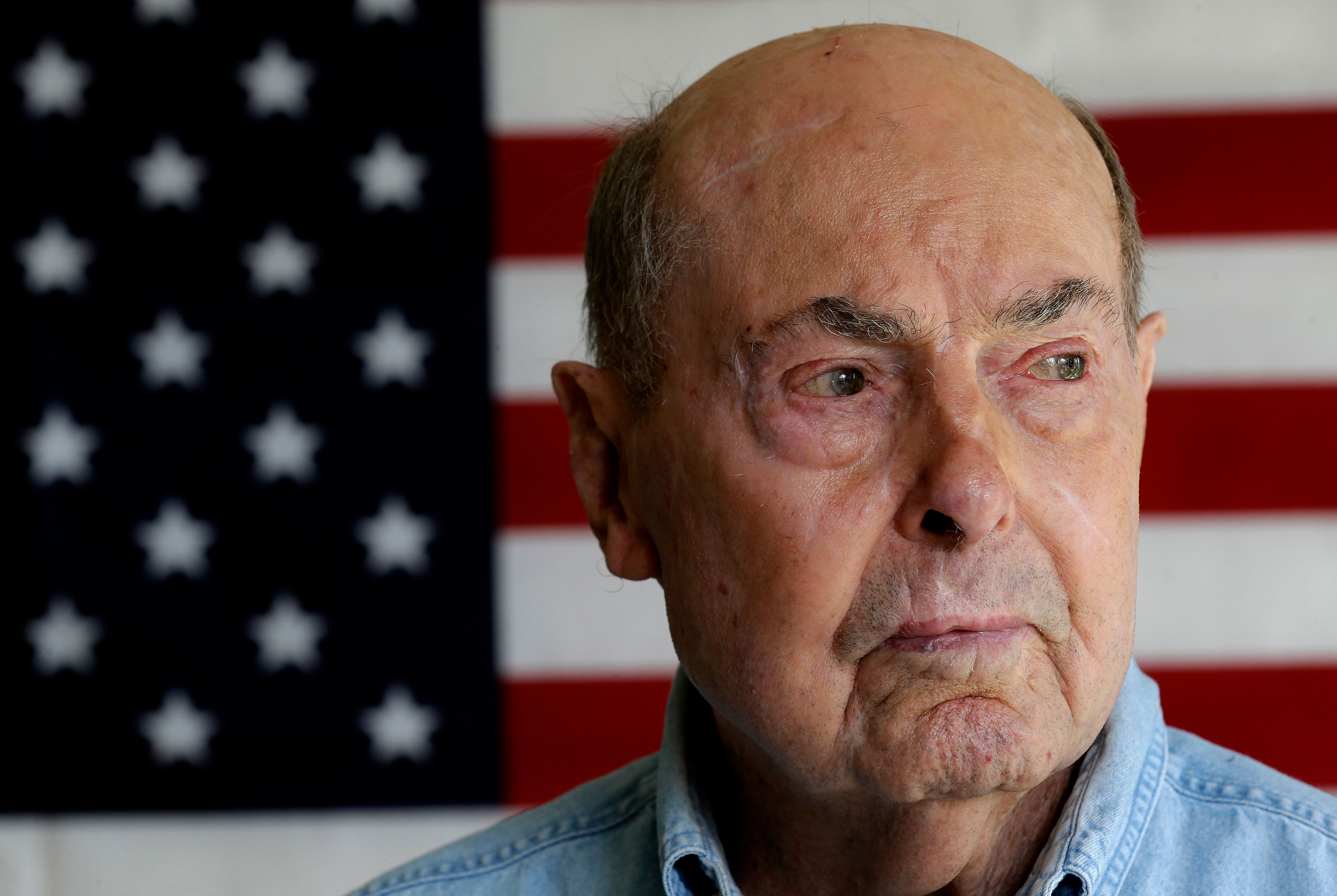Ray Lambert, D-Day survivor, WWII torch bearer, dies at 100
Ray Lambert, the Army medic who survived multiple wounds on D-Day and was saluted by a president on the 75th anniversary of the World War II battle, has died at the age of 100

Your support helps us to tell the story
From reproductive rights to climate change to Big Tech, The Independent is on the ground when the story is developing. Whether it's investigating the financials of Elon Musk's pro-Trump PAC or producing our latest documentary, 'The A Word', which shines a light on the American women fighting for reproductive rights, we know how important it is to parse out the facts from the messaging.
At such a critical moment in US history, we need reporters on the ground. Your donation allows us to keep sending journalists to speak to both sides of the story.
The Independent is trusted by Americans across the entire political spectrum. And unlike many other quality news outlets, we choose not to lock Americans out of our reporting and analysis with paywalls. We believe quality journalism should be available to everyone, paid for by those who can afford it.
Your support makes all the difference.Ray Lambert, the Army medic who survived multiple wounds on D-Day and was saluted by a president on the World War II battle's 75th anniversary, died on Friday. He was 100.
Lambert died at his home in Seven Lakes, North Carolina with his wife and daughter by his side, said neighbor and friend Dr. Darrell Simpkins. The physician, who accompanied Lambert to France in June 2019, said the veteran succumbed to an aggressive form of facial cancer and congestive heart failure.
“Ray was talking coherently, conversing on the phone, and enjoying visitors until yesterday,” Simpkins wrote in an email to The Associated Press. “He was an amazing man.”
The Alabama native was a medic with 2nd Battalion, 16th Infantry Regiment, part of the Army’s 1st Division — the “Big Red One.” He took part in the Allied invasions of North Africa and Sicily before his war came to an end June 6, 1944, on the sands of Omaha Beach.
Sgt. Lambert was in the first wave of the assault. He was helping a wounded soldier in the heavy surf when a landing craft ramp dropped on him, pushing him to the bottom.
“Ray was only 23, but he had already earned three Purple Hearts and two Silver Stars for fighting in North Africa and Sicily,” then-President Donald Trump told a hushed crowd in 2019 at the American Cemetery overlooking the beach.
“They came to the sector, right here below us,” Trump continued as Lambert sat behind him, his favorite purple “D-Day Survivor” cap on his head. “Again and again, Ray ran back into the water. He dragged out one man after another. He was shot through the arm. His leg was ripped open by shrapnel. His back was broken. He nearly drowned.”
At the end of his speech, Trump turned to face Lambert.
“Ray,” he said. “The free world salutes you.”
For many years, the diminutive businessman refused to talk about the horrors he had witnessed and experienced overseas. But as he aged and his fellow veterans began passing away, he felt a sacred duty to share his story, and theirs.
“I did what I was called to do,” he wrote in his book, “Every Man a Hero,” published shortly before the 75th anniversary. “As a combat medic, my job was to save people, and to lead others who did the same. I was proud of that job and remain so. But I was always an ordinary man, not one who liked being at the head of a parade...
“My job now is to remember, not for my sake, but for the sake of others.”
Lambert had made many trips to Normandy in France, visiting classrooms and posing for innumerable photos. During the 2019 trip, a French elementary school student asked Lambert if he still had nightmares about Normandy.
“When I go to look at the beaches at Omaha, I remember all my friends that were killed there,” he said. “And when I look at the Channel and the water is rough, I, it seems at times that I can hear voices.”
That morning in 1944, as bullets whizzed and mortar rounds splashed around him, Lambert scanned the beach for something, anything behind which he could safely treat the wounded. He spotted a lump of leftover German concrete, about 8 feet wide and 4 feet high (2.4 meters wide and 1.2 meters high).
“It was my salvation,” he said.
A plaque installed in 2018 now recognizes it as “Ray's Rock.”
Simpkins said Lambert requested that his ashes be buried at Arlington National Cemetery, and that some be scattered on Omaha Beach.
Lambert is survived by his wife, Barbara, and daughter, Linda McInerney. He was preceded in death by his son, Arnold Lambert.
___
Breed, who is based in Raleigh, North Carolina, chronicled Lambert's last trip to Normandy.